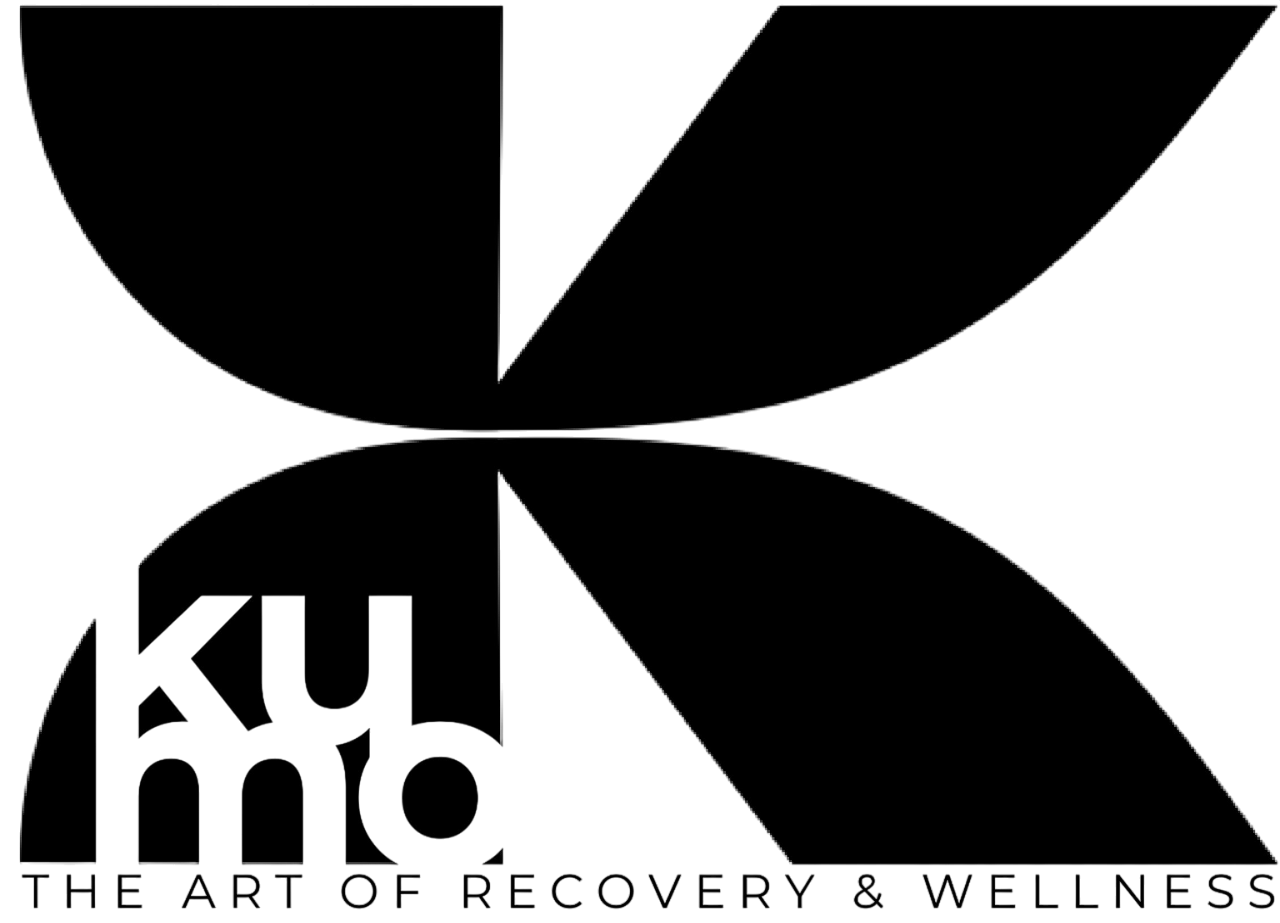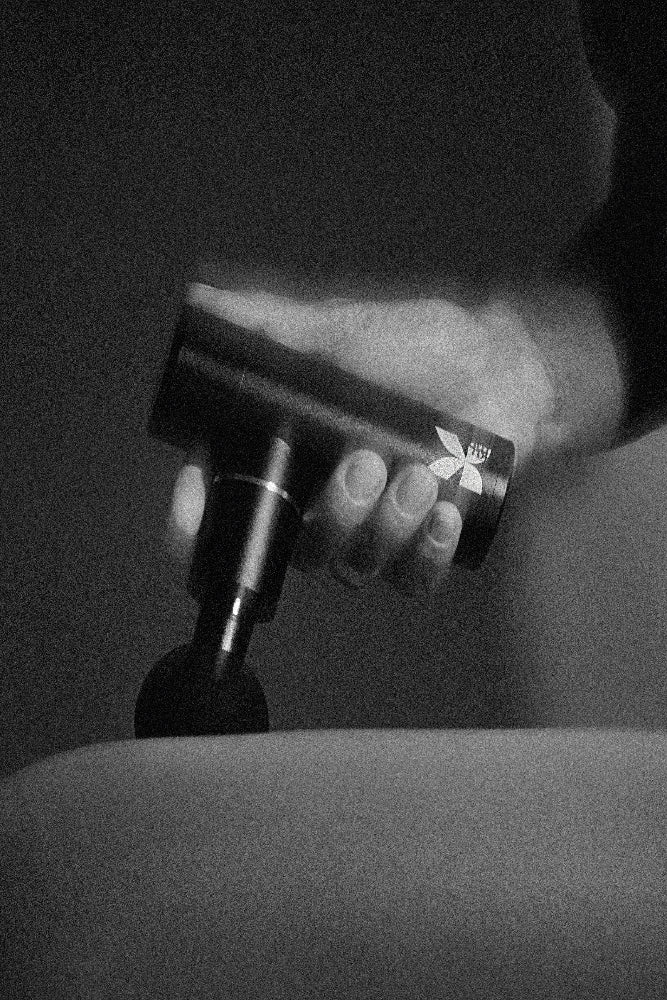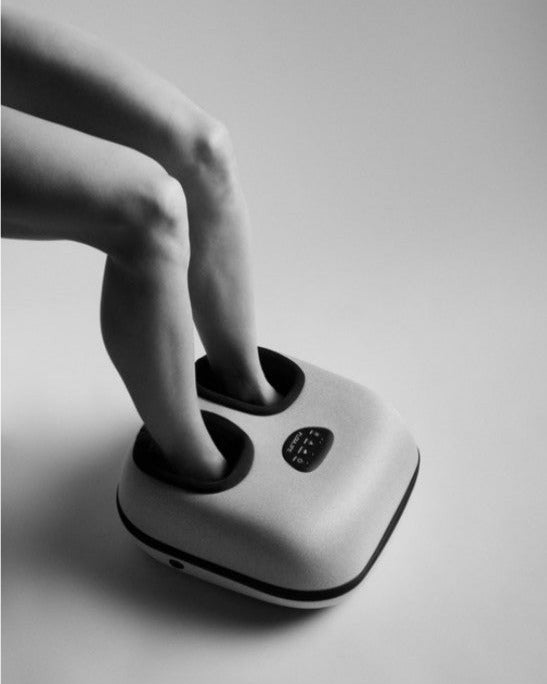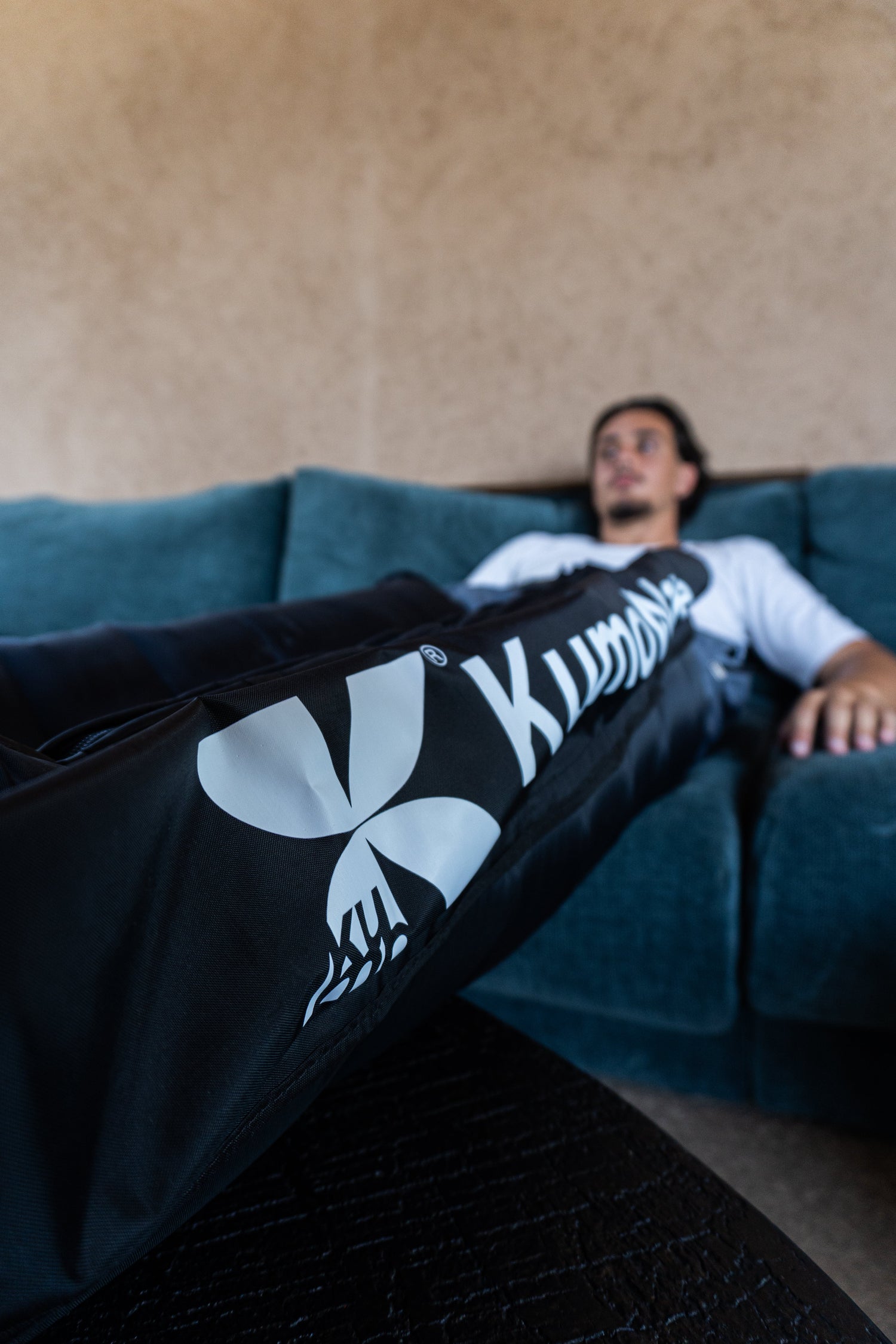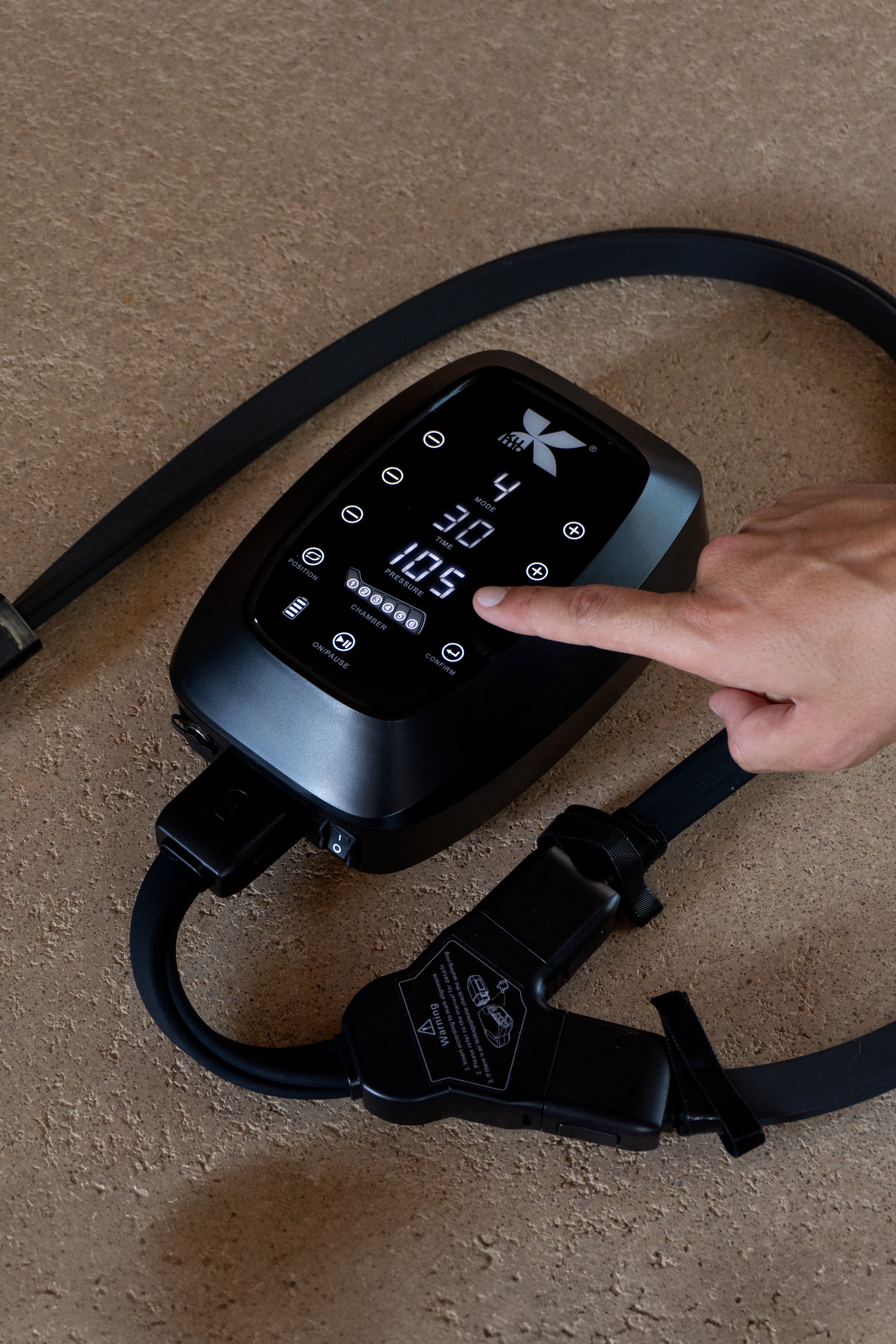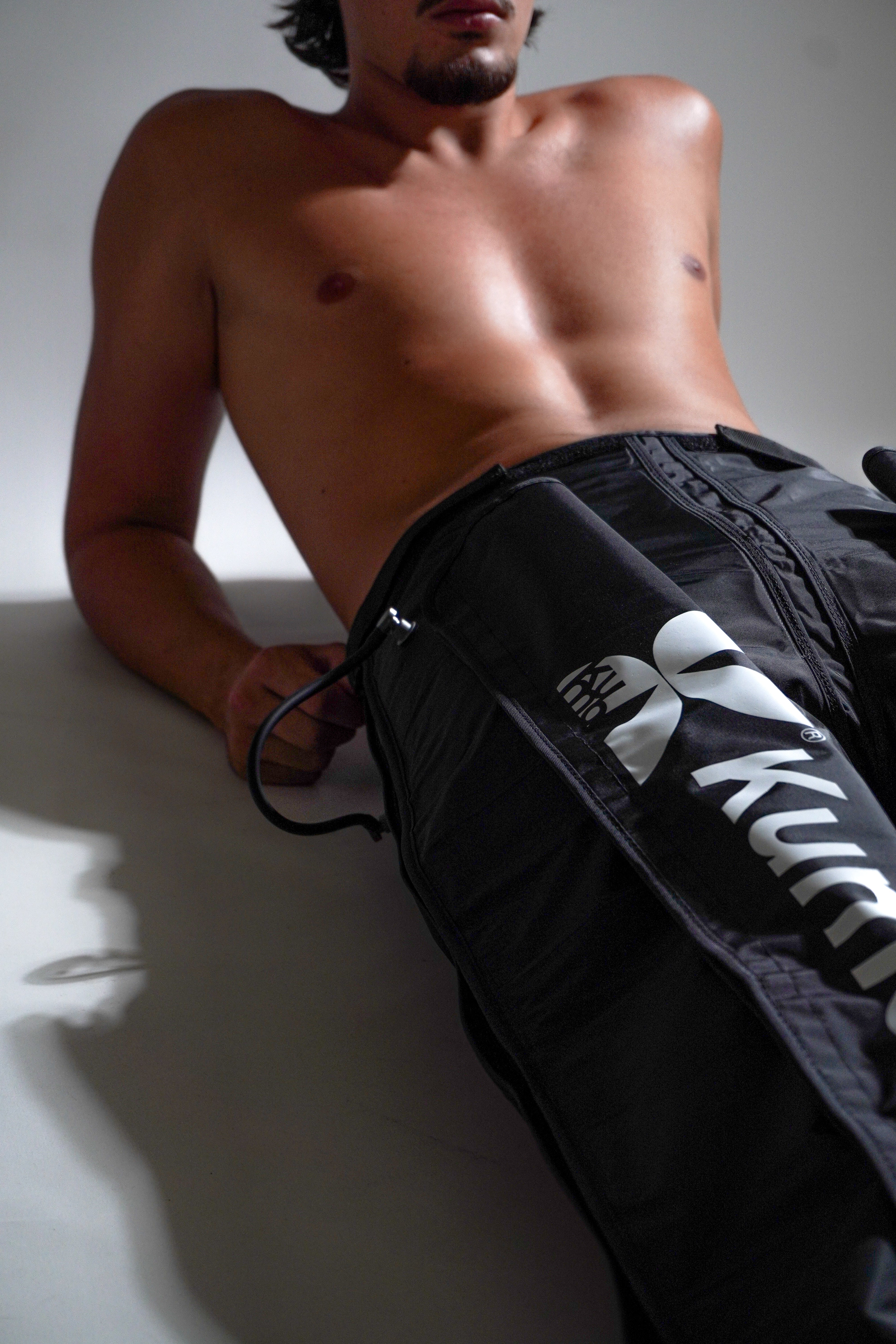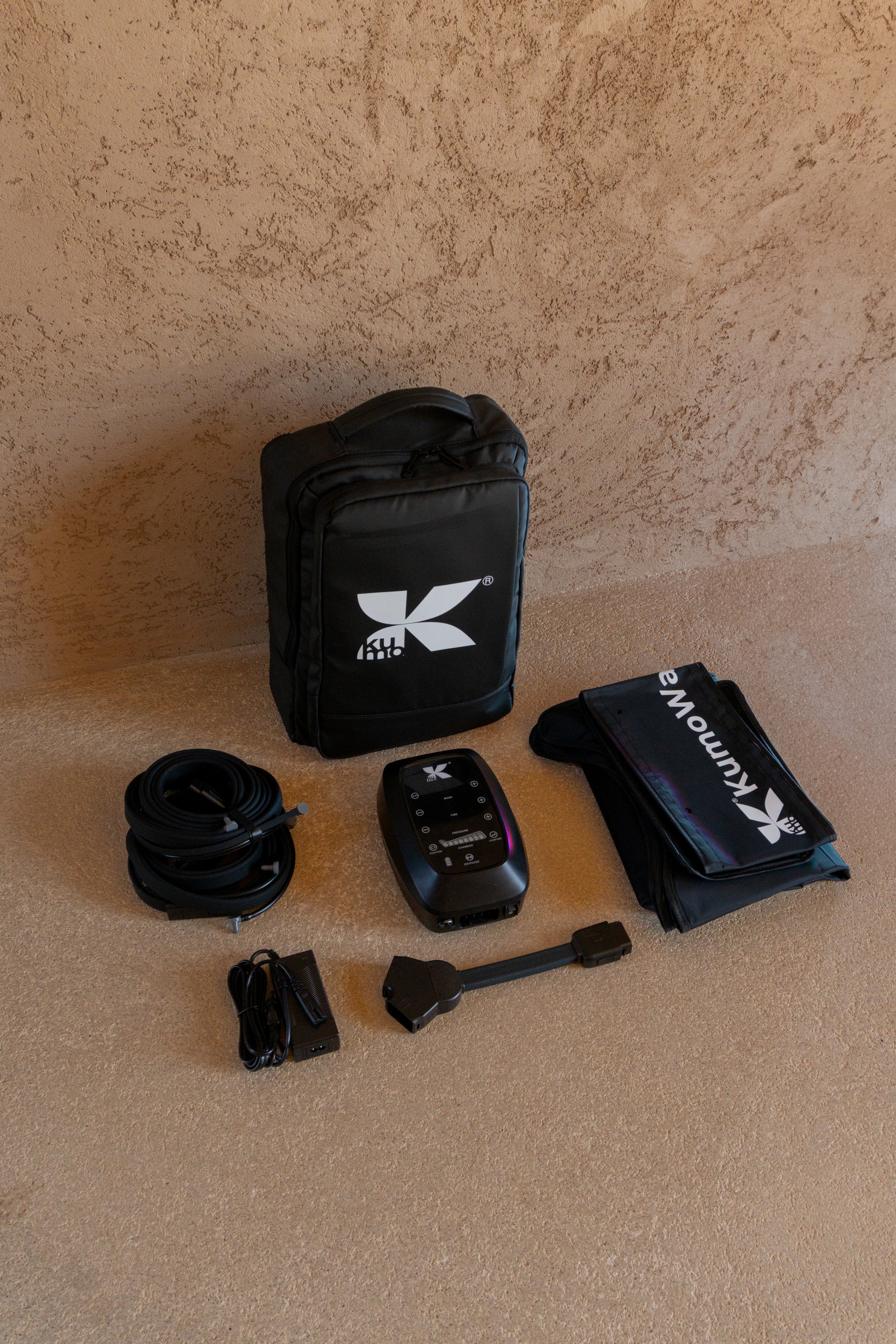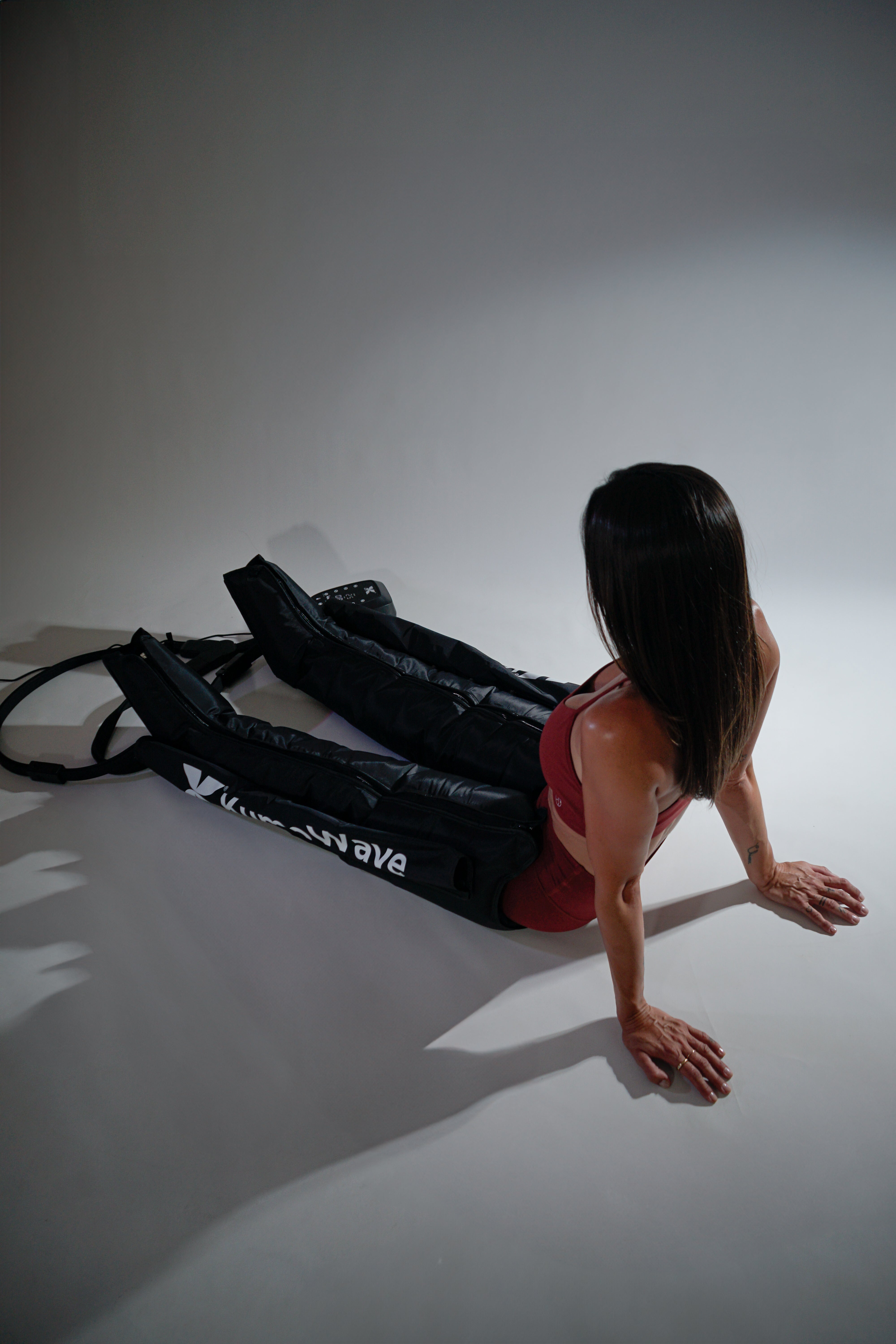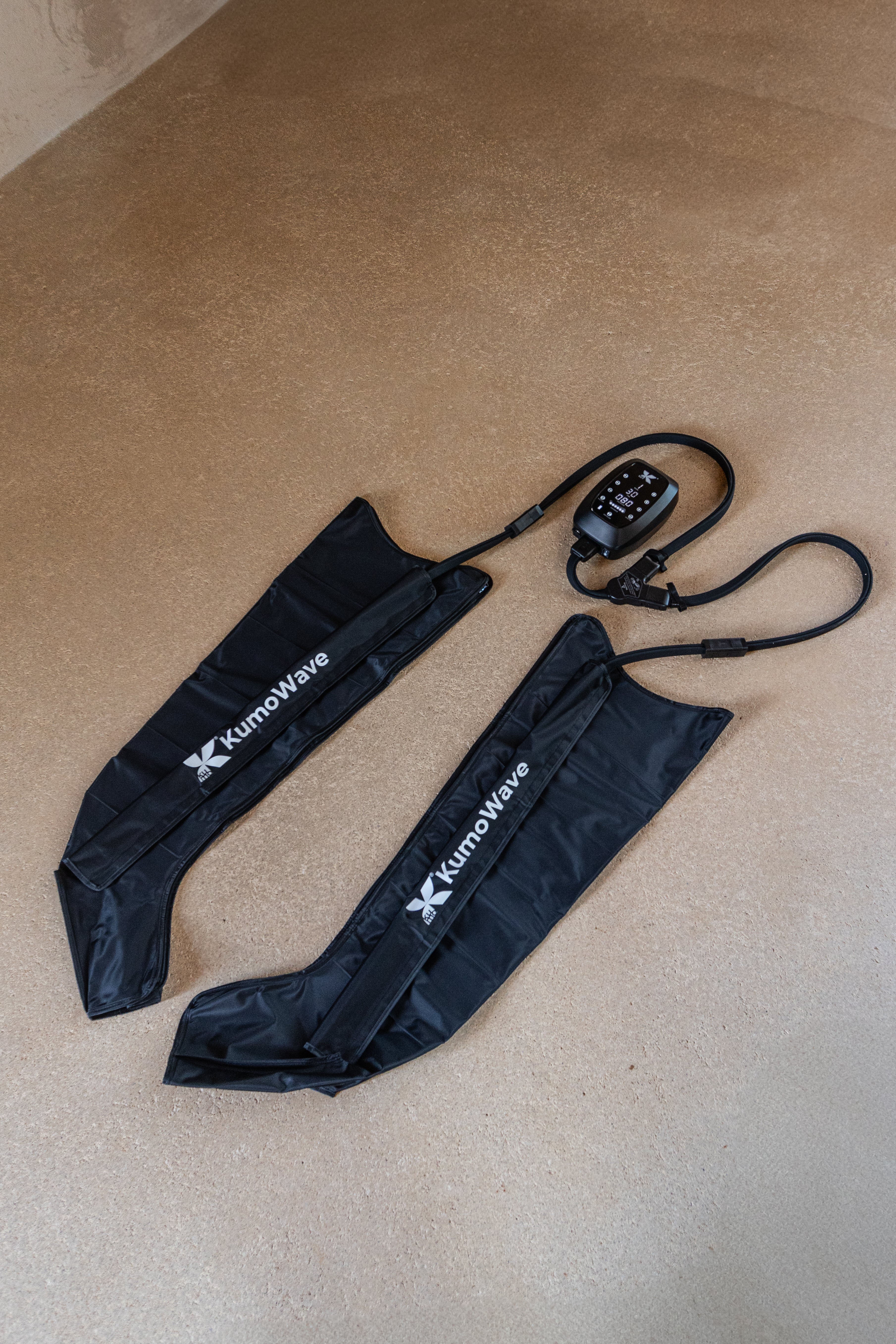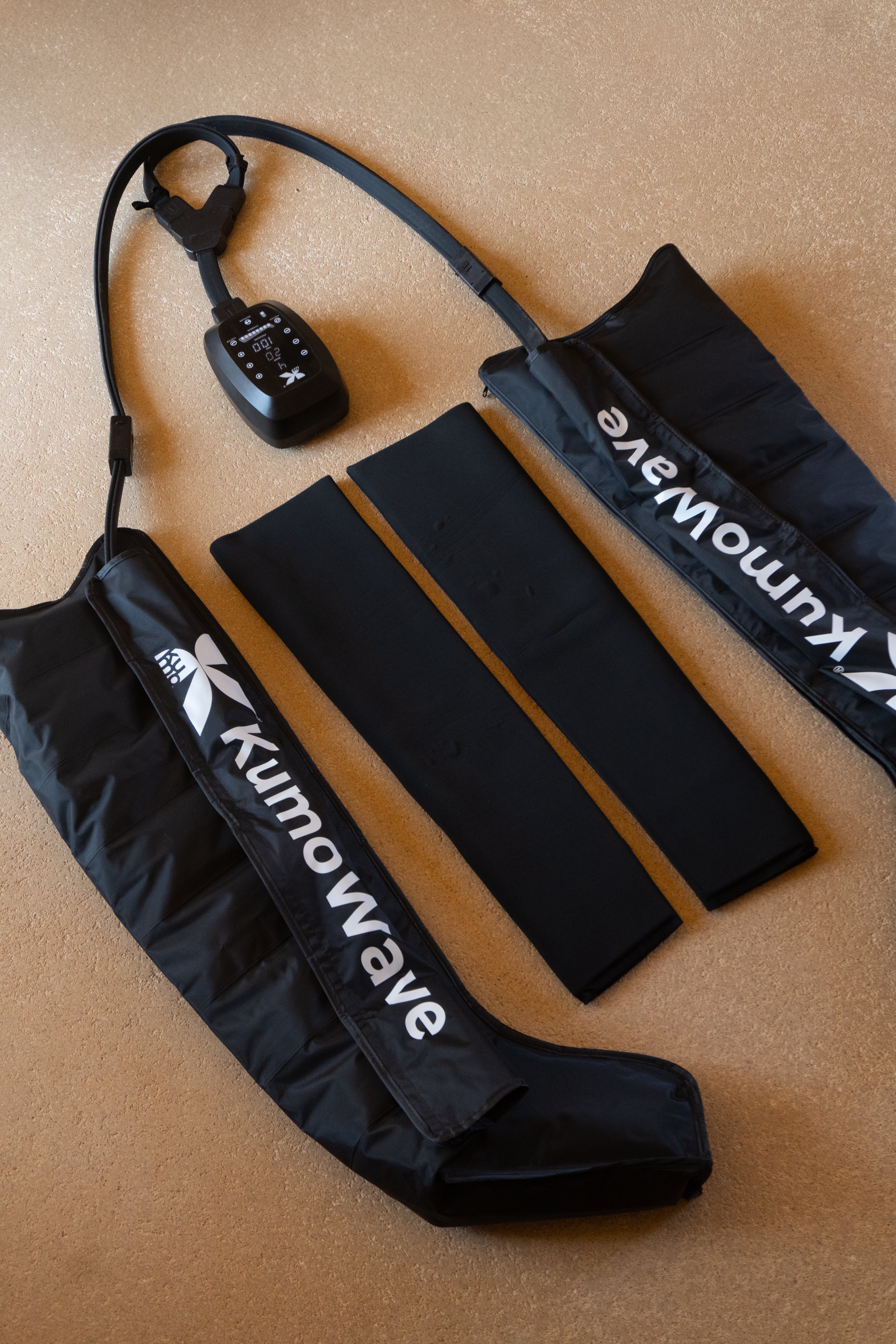Lymphatic drainage during pregnancy: what's safe and how to do it right. If you're pregnant and notice swelling in your legs, ankles, or hands, here's when manual lymphatic drainage is best, what precautions to take, and safe, professionally supported alternatives for edema relief.
Coming soon
- Suitable if the pregnancy is healthy and the practitioner adapts pressure, areas, and posture; avoid the abdomen.
- Contraindicated with preeclampsia/uncontrolled hypertension, venous thrombosis, active infections or bleeding.
- Warning signs: sudden calf pain, shortness of breath, severe headache, or blurred vision.
- Helpful supplements: medical compression, gentle movement, hydration, and leg elevation.
- Consult with your obstetrician beforehand; start with short sessions and very light pressure.
What is manual lymphatic drainage and why is it important during pregnancy?
Manual lymphatic drainage (MLD) is a very gentle massage technique that guides interstitial fluid to the lymph nodes to promote its return. During pregnancy, hormonal changes and increased blood volume promote fluid retention, especially in the third trimester. A well-executed technique can help relieve feelings of heaviness, skin tightness, and mild cramping associated with bloating.
Unlike a traditional massage, DLM uses light pressure, slow rhythms, and sweeping movements targeting the neck, armpits, and groin. It's well-suited to complement daily routines such as walking, hydration, and leg elevation, which the NHS recommends for normal pregnancy edema.
Safety: What we know and what precautions to take
Specific scientific evidence for pregnant women is limited, but clinical consensus indicates that lymphatic drainage is generally safe when:
- It is performed by a professional trained in DLM.
- The abdomen and painful areas or areas with prominent varicose veins are avoided.
- Very gentle pressure is used and moderate sessions.
- There is authorization from the obstetrician.
Absolute or relative contraindications:
- Preeclampsia/uncontrolled hypertension, severe growth restriction, or threatened premature delivery.
- Venous thromboembolism (DVT/PE) or high risk without prophylaxis.
- Active systemic or skin infection, fever, decompensated heart failure, severe kidney disease.
- Unexplained vaginal bleeding or abdominal pain.
The International Society of Lymphology consensus document details general precautions and contraindications for DLM in 2020, useful as a clinical safety framework (ISL, 2020). See consensus . To understand what swelling to expect during pregnancy and when to seek medical advice, the NHS offers clear guidelines.
Warning signs: If you experience severe calf pain, localized redness, shortness of breath, severe headache, or visual disturbances, stop the session and go to the emergency room.
Safety summary table (short summary)
| Aspect | Recommendation in pregnancy |
|---|---|
| Pressure | Very light, rhythmic; avoid deep maneuvers |
| Zones | Legs, feet, hands, upper back; avoid abdomen |
| Position | Left lateral decubitus or sitting with legs raised |
| Duration | 20–40 min, 1–2 times/week as tolerated |
| Avoid if… | Preeclampsia, DVT/PTE, active infection, bleeding, fever |
For home care and safe recovery technology alternatives, you can explore solutions from KUMO and consult with your healthcare professional before using them during pregnancy.
How to do it safely: practical guidelines
- Before: Confirm with your obstetrician that there are no contraindications. Inform them about your week of pregnancy, symptoms, and history of thrombosis.
- During: Use comfortable positions (on your left side or semi-recumbent). Maintain calm breathing, maintain a comfortable temperature, and pause if you experience dizziness or nausea.
- Technique: Gentle, pain-free pressure, moving slowly toward the lymph nodes. Do not work the abdomen or apply pressure to varicose veins or sensitive areas.
- After: Drink water, elevate your legs for 10–15 minutes, and assess how you feel over the next 24 hours (a slight increase in urine output is to be expected).
- Pace: Start with short sessions (20–25 min) and increase as tolerated.
Gentle lymphatic self-massage (step by step)
This protocol is for guidance only and does not replace professional work:
1) Diaphragmatic breathing: 5 deep breaths to "activate" venous return. 2) Supraclavicular: With your fingertips, very gently tap toward the hollow above the collarbone (10–15 repetitions). 3) Axillary: In each armpit, make short inward and upward sweeps (10 repetitions). 4) Legs: From the ankle to the knee with light sweeps; from the knee to the groin. Avoid pressure on varicose veins. 5) Hands and forearms: Sweep from fingers to elbows and from elbow to armpit. 6) Final: Repeat 2–3 deep breaths.
Total duration: 10–15 minutes. If discomfort occurs, stop the massage.
Safe supplements to relieve bloating
- Medical compression: Graduated compression stockings help reduce edema and thrombotic risk; they are widely recommended in obstetric guidelines. In hospital settings, intermittent pneumatic compression is used to prevent thrombosis in caesarean sections or at-risk patients, which supports their safety under RCOG supervision, thromboprophylaxis guidance. For home use of boots, consult your obstetrician and choose gentle pressures; discover our pressotherapy boots .
- Movement and active rest: gentle walks, ankle circles, frequent breaks if you work while sitting. Avoid standing for long periods of time.
- Hydration and elevation: Sip water throughout the day and elevate your legs above your heart for 15–20 minutes.
- Skincare: Regular hydration to improve elasticity and increase volume.
- Red Light Recovery: Low-power LED light is noninvasive and can support relaxation and rest. If you are interested, consult your professional first and learn about our LED light therapy .
- Myofascial release devices: During pregnancy, avoid intense vibration and abdominal areas. If your doctor approves, use a massage gun on the upper back, buttocks or feet at minimum intensity, short sessions.
For personalized advice on which devices are right for your situation, write to us from our page contact .
Myths and realities
- “Any massage is good during pregnancy”: no. Drainage should be gentle, tailored, and avoid the abdomen.
- “If there's swelling, press hard”: False. Deep pressure can worsen symptoms or damage fragile vessels.
- “Swelling is always normal”: not always. If it's sudden, asymmetrical, or painful, it requires immediate medical evaluation.
- “Compression boots are the same for everyone”: no. Pressure setting, time, and clinical profile make a difference; medical validation is required.
Evidence and reference sources
- DLM is a gentle technique with contraindications well described by the International Society of Lymphology (2020 consensus) ISL .
- Mild edema is common during pregnancy; the NHS describes practical measures and warning signs.
- The Cleveland Clinic details how lymphatic drainage works and its general contraindications Cleveland Clinic.
- Obstetric guidelines such as RCOG recommend mechanical compression for thromboprophylaxis in RCOG risk patients.
Explore more wellness resources and recovery technology at KUMO .
FAQ
Is lymphatic drainage safe in the first and third trimester?
In a healthy pregnancy, manual lymphatic drainage can be safe in any trimester if performed by a trained professional, with the approval of your obstetrician, avoiding abdominal pain and deep pressure. In the first trimester, prioritize very short sessions due to increased sensitivity and nausea. In the third trimester, be careful with your posture (left lateral decubitus or semi-sitting) and avoid prolonged periods on your back. If you have a history of thrombosis, hypertension/preeclampsia, bleeding, or abdominal pain, do not perform this procedure until further medical advice.
Can drainage cause premature birth or harm the baby?
Properly applied manual lymphatic drainage is superficial and works subcutaneous tissue, not the uterus; there is no evidence that it causes premature labor when performed with proper technique and precautions. Risks arise if pressure is applied to the abdomen, if deep maneuvers are used, or if there are contraindications (preeclampsia, DVT, infection). As a precaution, keep the technique gentle, avoid the abdomen, limit the duration, and consult your obstetrician before starting.
How many sessions do I need and how long does each one last?
It depends on your symptoms and tolerance. Many pregnant women start with one 20–30-minute session per week and adjust to one to two sessions per week in the third trimester if there is significant swelling. The goal is to relieve heaviness and improve comfort, not completely eliminate the physiological edema of pregnancy. Combine drainage with compression, gentle movement, and leg elevation to enhance results. Regular re-evaluation with your practitioner is key.
Can I use pressure therapy boots while pregnant?
It can be considered with medical authorization, at low pressures, avoiding the abdomen, and with short sessions. Intermittent pneumatic compression is used in hospital obstetrics to prevent thrombosis, which supports its safety in appropriate profiles and under supervision. If you opt for home use, start with gentle programs, stop if you notice pain, numbness, or dizziness, and always consult your obstetrician. Learn about our pressotherapy boots .
What signs indicate that I should stop and consult?
Discontinue treatment immediately if you experience sharp pain in your calf, localized redness or warmth, shortness of breath, persistent dizziness, severe headache, blurred vision, vaginal bleeding, or abdominal pain. Discontinue treatment immediately if you notice marked worsening of edema in only one leg. These signs may indicate problems that require urgent evaluation. If you have any minor concerns (e.g., unusual post-session fatigue), discontinue treatment and discuss it with your obstetrician at your next visit.
To remember
- Manual lymphatic drainage is gentle and can relieve normal swelling of pregnancy if performed with proper technique and medical authorization.
- Avoid abdominal pressure, deep pressure, and long sessions; prioritize lateral or semi-seated posture.
- Do not perform this test if you have preeclampsia, thrombosis, active infection, fever, or bleeding.
- Strengthen with compression, movement, hydration and leg elevation.
- Warning signs require immediate medical attention.
- Looking for support in your recovery routine? Check out our solutions. KUMO and consult us from contact to customize your plan.
